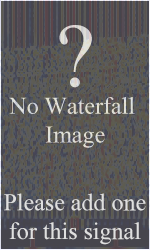Multiple sub-Nyquist Sampling Encoding (MUSE)
This Article is currently in stub process. Feel free to add on to it by adding accurate images, sound files, and IF-IQQuadrature signals form the basis of complex RF signal modulation and demodulation, both in hardware and in software, as well as in complex signal analysis., by hitting the "Edit" button above this page.
Multiplite sub-Nyquist Sampling Encoding (MUSE) also known as Hi-Vision was a early analogue high-defition television standard developed by NHK Science and Technical Research Laboratories. Replaced by digital ISDB broadcast since 2007.
Characteristics[edit]
Format[edit]
Luma: 20 MHzMegaHertz (MHz) 10^6 Hz, 1125 lines
Chroma: 5 MHzMegaHertz (MHz) 10^6 Hz, YCbCr
Audio: DANCE (Differential PCM Audio Near-instantanous Compressing and Expanding) digital audio, up to 8 sound channels, 48 khz sampling rate and 20 khz bandwidth, modulated into vertical blanking field with transsmition rate of 18.225 Mbit/s
Frequencies[edit]
Decoding Software[edit]
- Hobby Level Software
Encoding Software[edit]
- Hobby Level Software
